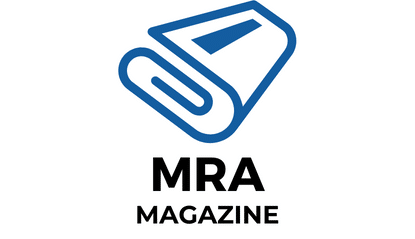How to Introduce a Newborn Baby to a Protective Rottweiler?

Introducing a newborn baby to a household dog, specifically a Rottweiler, is a significant family event that requires careful planning and execution. The role of the family pet often changes when a baby arrives. Your dog, particularly if it’s a Rottweiler, may feel threatened or displaced. As a result, it’s crucial to ensure the process is as smooth and stress-free as possible for both your baby and your Rottweiler. This article provides a comprehensive guide on how to introduce a newborn baby to a protective Rottweiler.
Understanding Your Rottweiler
Before delving into the specifics of the introduction, it’s essential to understand the nature and behavior of Rottweilers. The American Kennel Club (AKC) categorizes them as loyal, loving, and confident guardians. They are known for their friendliness toward family and a natural instinct to protect their home and loved ones. However, their behavior can vary significantly based on training, socialization, and individual temperament.
A lire en complément : How to Train a Jack Russell Terrier to Compete in Earthdog Trials?
Rottweilers, often affectionately referred to as ‘Rotties,’ are a large and powerful breed. Despite their size and strength, they are extremely sensitive to changes in their environment and family composition. Thus, they might find the arrival of a baby perplexing and challenging to adapt to.
Understanding your Rottweiler’s behavior will help you identify signs of stress or confusion during the transition period and take appropriate action.
Lire également : How to Help a Dog with a Phobia of Thunder Without Medication?
Preparing Your Rottweiler for the Baby’s Arrival
Preparation is key when introducing a newborn baby to a protective Rottweiler. The process should begin several months before your baby arrives. It involves a combination of training your Rottweiler and gradually adjusting its environment to mimic the changes that will occur once the baby is home.
Start by exposing your pet to baby-related sounds, smells, and objects. This exposure will help your Rottweiler become familiar and comfortable with these new stimuli. You can find recordings of baby sounds and use baby lotions or powders around the house. Additionally, setting up baby equipment like cribs, strollers, and high chairs early can help your Rottweiler adjust to the new items in its environment.
Training your Rottweiler during this preparation phase is also crucial. According to the AKC, obedience training is especially important for Rottweilers. Your pet should respond to basic commands like ‘sit,’ ‘stay,’ and ‘leave it.’ This obedience will be invaluable when your baby arrives, and you need to control your Rottweiler’s behavior.
Introducing Your Rottweiler to the Baby
The actual introduction of your newborn baby to your protective Rottweiler should be a calm and controlled event. It’s recommended to first allow your Rottweiler to adjust to the smell of the baby. You can do this by bringing home a blanket or piece of clothing that your baby has worn in the hospital. Allow your dog to sniff the item and get familiar with the baby’s scent.
When introducing your Rottweiler to your baby, make sure the dog is calm and relaxed. You should be present during this introduction, as well as any other adult who is a part of the dog’s family. Your Rottweiler should be on a leash, and the baby should be in a carrier or held by an adult. Allow the dog to approach the baby gradually and sniff from a distance before getting closer.
Remember, this is a new experience for your Rottweiler, and it may not react as you expect. Be patient and do not force the interaction.
Ensuring a Safe Co-existence
Creating a safe environment for your baby and Rottweiler to coexist is of utmost importance. Despite the best of introductions, a Rottweiler can still pose a risk due to its size and strength. Therefore, never leave your baby alone with the dog.
Establish boundaries for both the baby and the Rottweiler. As your child grows, teach them to respect the dog’s space and not to disturb the pet while it’s eating or sleeping. Similarly, train your Rottweiler to respect the baby’s space.
Regularly monitor your Rottweiler’s behavior for any changes. If you notice any signs of distress or aggression, consult with a professional dog trainer or a behaviorist who can provide guidance.
Remember, while this process may seem daunting, with time, patience, and careful training, it’s possible for your protective Rottweiler to become a loyal and loving protector for your newborn baby.
Seeking Professional Help
While the tips provided in this article will certainly be beneficial, you may find it necessary to seek help from a professional dog trainer or behaviorist, especially if your Rottweiler exhibits signs of distress, aggression, or confusion.
A professional trainer can provide customized strategies and techniques based on your Rottweiler’s behavior and temperament. Furthermore, a professional can offer continuous support and guidance throughout the transition period, ensuring the safety and wellbeing of your family and your beloved pet.
Introducing a newborn baby to a protective Rottweiler is a significant transition that requires time, patience, and understanding. However, with careful preparation, patience, and professional guidance, you can ensure a safe and harmonious relationship between your baby and your Rottweiler.
Reinforcing Positive Behavior with Rewards
When incorporating positive reinforcement techniques in your dog’s training, it’s essential to remember that, like humans, dogs will respond favorably to rewards. For your Rottweiler, these rewards can take the form of treats, praise, or playtime. By rewarding your Rottweiler for demonstrating desirable behaviors, you establish a positive association that encourages the repetition of those behaviors in the future.
Initially, you could reward your Rottweiler each time it exhibits calm behavior around baby-related items, or whenever it responds to specific commands. For example, when the dog sits calmly next to the baby’s crib or stroller, you should give it a treat or pet it affectionately.
Reinforce positive behavior by showering the Rottweiler with attention and affection when it showcases obedience. This approach will help the dog associate the baby with good things and create a positive atmosphere in the house. Remember, it’s pivotal to be consistent with your rewards to ensure the dog understands what behavior is being praised.
In addition, engaging your Rottweiler in dog sports can be a great way to keep it active, happy, and well-behaved. Activities such as agility training or fetch can help keep your Rottweiler’s body and mind occupied, reducing the chances of any aggressive or bored behavior around the baby.
Understanding Your Rottweiler’s Body Language
Understanding your Rottweiler’s body language is key to gauging its feelings towards the new family member. Dogs communicate a lot through their body movements, and recognizing these signals is crucial for a successful introduction.
When the baby arrives, observe your Rottweiler’s reactions. For instance, a relaxed, wagging tail signifies happiness, while ears pinned back and excessive panting might indicate stress or fear. If the dog’s body becomes rigid or it starts growling, this could be a sign of aggression.
Remember that a wagging tail does not always signify a happy dog; it can also indicate agitation or anxiety. Thus, understanding the difference between relaxed and tense body language can help you better manage interactions between your baby and the Rottweiler.
If your Rottweiler shows signs of stress or aggression around the baby, it’s crucial to seek help from a professional dog trainer or behaviorist. The sooner you address these issues, the safer and more comfortable your dog, baby, and family will be.
Conclusion
Introducing your newborn baby to a protective Rottweiler can be an overwhelming experience. However, with proper understanding, preparation, and patience, your dog will adapt to the new addition to the family. Remember to respect your Rottweiler’s space and feelings, engage them in positive reinforcement training, and understand their body language. If the process becomes too challenging, don’t hesitate to seek professional help for dog training.
As your baby grows, they will also need to learn how to interact appropriately with your Rottweiler. Teach them to respect the dog’s space and to interpret its body language. Through careful, patient work, your Rottweiler will become not just your baby’s protector but also their lifelong friend.
